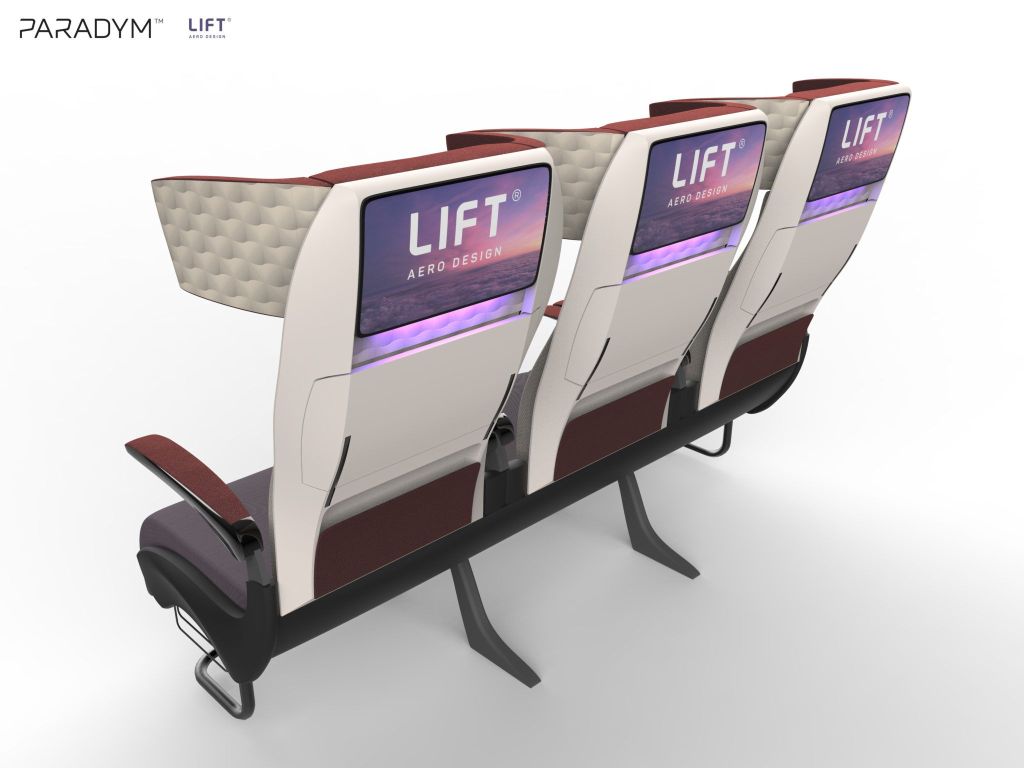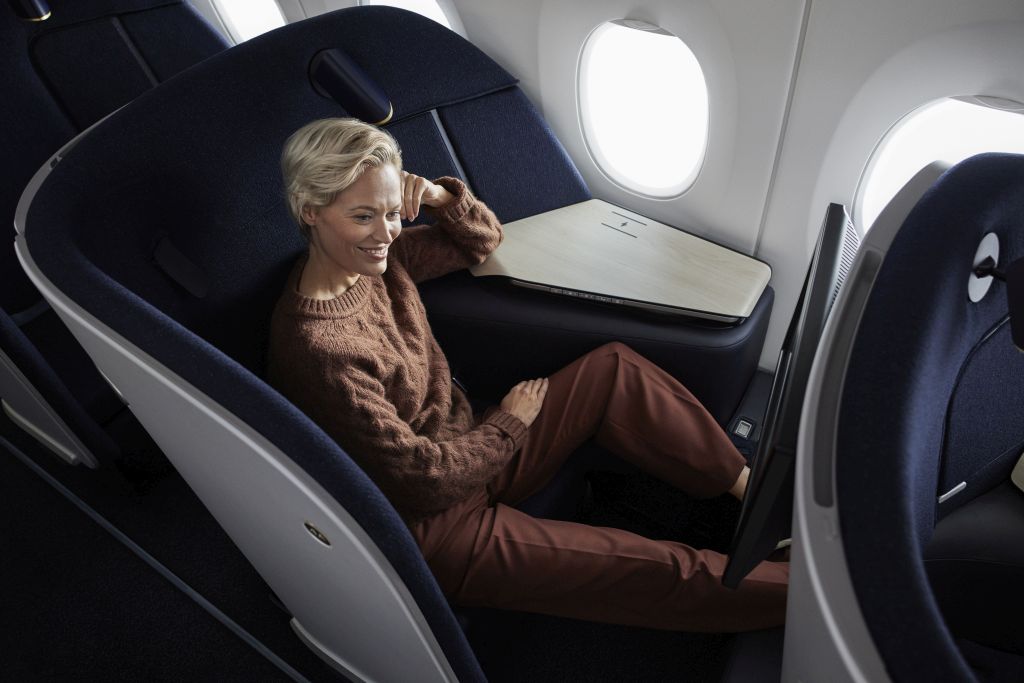The future is now

According to Monica Wick, CEO and founder at RedCabin, an environment built on collaboration and knowledge-sharing can enable the industry to create more inclusive, sustainable, and spectacular cabin interiors that deliver the type of passenger experience we have all dreamed of.
Air travel is entering a new era. The pandemic and the need for a greater focus on sustainability have been the catalyst for reimagining the onboard passenger experience and helped kickstart the development of a new generation of cabin interiors.
Modern aircraft interiors are built primarily around three elements: hygiene, privacy, and comfort. During the pandemic many airlines revamped their soft products and onboard amenities to meet the evolving hygiene needs of travellers. Two years later, the hard products are now advancing too.

Traditionally, innovation finds a home in the premium cabins first (owing to an airline’s ability to more easily justify the development of cabins that bring in the most revenue per passenger). In recent months we have seen the unveiling of Finnair’s new business class cabin, built around the AirLounge seat from Collins Aerospace. The seat has a large, curved backshell which naturally cocoons passengers for enhanced privacy – replicating the feel of a residential armchair. Divider screens and multiple seating and sleeping positions mean passengers have the flexibility to use the ‘lounge’ space in the way that best suits their needs, offering new levels of actual and perceived comfort.
However, this notion of flexibility – for both passengers and airlines – is also making its way into economy class. The ‘Paradym’ concept from Lift Aero Design sets a new benchmark for economy travel: offering 20inch-wide seats with double armrests, large headrest wings for personal privacy and head support, and the ability to transform three seats into a 1.75m bed – all without compromising on airline passenger numbers or revenue.
The wonder of wellbeing
IATA forecasts there will be 25.8 million commercial flights in 2022 and for those passengers, the idea of cabin wellness has become significantly important.

The cabin interior is often the most crucial factor in creating a relaxing and comfortable atmosphere onboard. There have been several interior innovations launched in recent months that are positioned as cabin wellbeing enhancements: AirShield – co-developed by Pexco Aerospace and Seattle-based design firm Teague – is a prime example.
AirShield is a device that re-purposes the airflow from the existing overhead air vents to create protective air barriers around and in-between each passenger in the cabin – disrupting the normal circulation of air to counteract the ‘swirl’ around seated passengers. When a passenger breathes, the exhaled water vapor is drawn away from the personal space of neighbouring passengers and immediately redirected downwards and out of the cabin to the aircraft’s HEPA filtration units.
Inclusive innovation
With so much focus on improving wellbeing in the cabin, designers and manufacturers have also invested heavily in new concepts to finally address major accessibility challenges. ‘Air4All’ is a truly revolutionary system developed by PriestmanGoode, Christopher Wood MBE at Flying Disabled, and the team at SWS Certification Services. The ingenuity of the concept is that it provides enhanced accessibility by allowing passengers to travel in their own wheelchair, without reducing seat count or disrupting the consistency of the cabin design for airlines. Designed initially for narrowbody aircraft, the system repurposes the front row seats to enable a wheelchair guidance and locking system to be installed – something passengers with reduced mobility (PRMs) have long been waiting for.
Sticking with inclusive innovations, the ACCESS bathroom from ST Engineering is the world’s first expanding lavatory. Designed in partnership with PRMs, it offers 40% more space than a traditional single-aisle bathroom. Crucially for airlines, the expansion is achieved while maintaining the standard lavatory footprint, so they can keep their existing cabin layouts while offering this enhanced experience.
The single-aisle conundrum
While the rise in the popularity and efficiency of single-aisle aircraft has helped support improved sustainability in the aviation industry, it has also created a huge challenge for the passenger experience.
The constrained footprint of these smaller aircraft means the cabin architecture is much closer to the passenger, creating a cramped environment and a passenger experience that fails to meet that of widebody aircraft. The tighter cabin layout also places passengers in closer proximity to each other, culminating in a sense of reduced privacy.
There has already been a raft of new single-aisle cabins unveiled with the aim of resolving these issues – with JetBlue’s Mint business class and the new Unum One from Unum Aircraft Seating leading the pack in terms offering passengers an experience built on space, privacy, comfort, and wellbeing.
But with many airlines expanding their single-aisle fleets, there are sure to be more ideas to come this year as the next generation of narrowbody interiors are unveiled.
Designing for tomorrow
In the future new aircraft types may offer the fundamental reimagining of air travel some industry experts have been calling for. Cutting-edge blended wing concepts, like the Flying V aircraft or MAVERIC by Airbus, will need ‘blue sky’ interiors the like of which our industry has never seen before.
With passengers seated in the wings, the unique shape of the aircraft naturally creates a huge expanse at the front of the cabin which could offer every passenger a suite-like residential environment, finally introduce bunk beds to commercial air travel, or even create dedicated social spaces like a ‘sky bar’.
Business jet interiors of the future are following a similar trend, putting a huge focus on making the cabin interiors as residential as possible. With less passengers to accommodate, designers can be even more creative with the finite space that is available. Boeing Business Jets, in partnership Aloft AeroArchitects and Edese Doret Industrial Design, have created a bold interior akin to a luxury hotel suite aboard a BBJ 737-700 – featuring, amongst many other things, a full-size rain shower.
Making ideas a reality
One thing is crystal clear: the only way to bring these innovative ideas to life is through cross-industry collaboration. Air travel is evolving and there is now so much synergy between aviation, rail, and automotive interiors. By prioritising an environment built on collaboration and knowledge-sharing, we can create more inclusive, sustainable, and spectacular cabin interiors that deliver the type of passenger experience we have all dreamed of.
RedCabin’s Aircraft Cabin Innovation Summit – the world’s only summit dedicated to making aircraft interior innovations a reality – returns 13-15 September 2022 in Atlanta.













